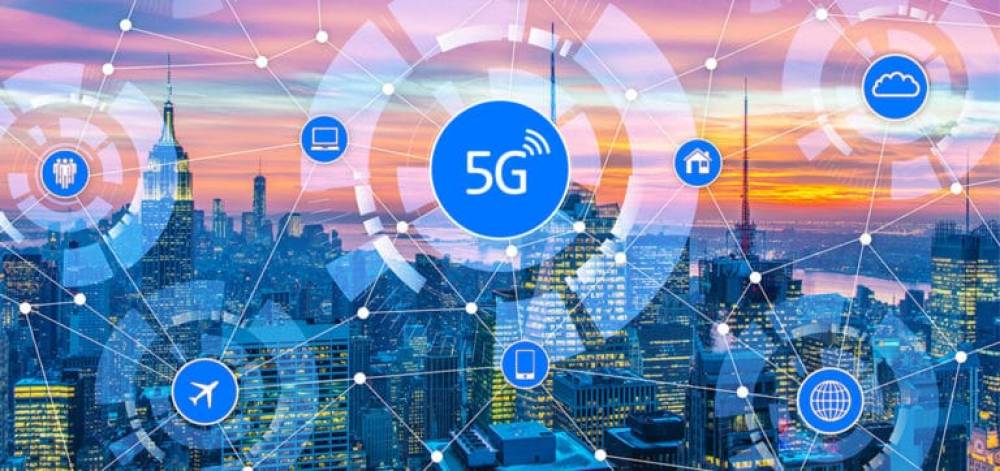
What You Should Know About 5G Technology
What You Should Know About 5G Technology
A new generation of mobile network technology is poised to achieve feats unimaginable to its predecessors.
What does 5G stand for? Simply put, 5G is an abbreviation for "fifth generation." Also, you may see the standard referred to as 5G-NR (the NR stands for "new radio"). If the earliest mobile network—analog voice calls, no SMS, no mobile data or browsing—was the first generation, 5G is its great-great-grandchild.
When today's 4G long-term evolution (LTE) mobile networks began rolling out nearly a decade ago, consumers embraced a new era of mobile rich media browsing. 5G technology, which is both an evolution of the 4G standard and a revolution in radio technology, promises to usher in an era of unprecedented connectivity and technological advancement in the 2020s. With increased capacity and speed, as well as ultralow latency, 5G will enable innovation previously unthinkable under the 4G LTE standard.
How Does 5G Technology Work?
All four previous generations of mobile networks relied on hundreds-foot-tall macro cell towers that required massive power investments to transmit over long distances.
5G operates in a slightly different manner. This upgraded mobile network maximizes throughput by combining frequencies from multiple bands. Along with traditional macrocell towers, 5G will employ a large number of much smaller microcells to cover new millimeter wave spectrum bands, effectively blanketing the network with ultrahigh-speed coverage.
Benefits of 5G
The 5G upgrade is primarily about speed for many end users. With 5G networks expected to reach speeds of up to 10 Gbps, the new networks will be up to 100x faster than their predecessors. 1
The primary benefits of 5G for industrial, agricultural, and commercial use cases are its high capacity and low lag. With up to five times the bandwidth of 4G,2 5G will enable new modes of production and distribution. In addition, early tests indicate that 5G could halve network latency. 3
- 5G Use Cases: Nearly every industry will be impacted by 5G's transformative power. There are already compelling 5G use cases in the healthcare, agriculture, retail, transportation, logistics, and manufacturing industries, to name a few.
- Healthcare: 5G represents a new frontier of care for physicians and patients. Consider a wearable insulin pump that uses artificial intelligence to make personalized recommendations to the patient's endocrinologist about diabetes management, or a smart implanted defibrillator that automatically and safely restarts a stopped heart—and instantly notifies the patient's cardiologist about the incident.
- Media and Entertainment: Broadband enabled the cloud-based storage of movies, television, and gaming. Now, 5G has the potential to deliver even richer media experiences to any screen, anywhere. On devices connected to a 5G network, end users will be able to enjoy smooth 4K video streaming, immersive virtual reality (VR) experiences, and highly responsive gaming, resulting in increased revenue opportunities for content creators, cloud service providers, and communications service providers.
- Retail: Due to the onslaught of online retail, modern brick-and-mortar stores are fighting an uphill battle to retain customers. 5G will enable future retailers to deliver new omnichannel customer experiences. Only one way? Getting rid of the cash register in retail transactions. Retailers will be able to create an automatic checkout experience that is as simple as walking out of the store with your full cart by utilizing AI-enabled cameras with low latency.
- Manufacturing: Convergence of 5G, AI, and the intelligent edge will transform manufacturing in ways not seen since Henry Ford unveiled the first assembly line. Supply chain, inventory management, and quality assurance processes will become more automated and cost effective as a result of IoT and edge computing.
5G: Charting a Course for the Future
Today's early 5G deployments mark the start of a sea change in how consumers and businesses interact with wireless networks. 5G will significantly expand the reach of IoT by connecting devices to the cloud faster and with less lag than ever before. 5G and the Internet of Things will work in tandem to enable more connected devices to automate additional business processes.
As edge computing, IoT, and 5G converge, powerful applications are expected to emerge. Personalized real-time shopping, lifelike immersive media, augmented reality, and automated robotics will all be revolutionary new use cases.
In the 5G era, technologies will converge to enable the intelligent edge, the Internet of Things, and artificial intelligence to work collaboratively to delight consumers, streamline business operations, and more effectively use data at scale. Intel is paving the way for the full transformative power of the new 5G standard by embedding technology at every level of the 5G ecosystem.

